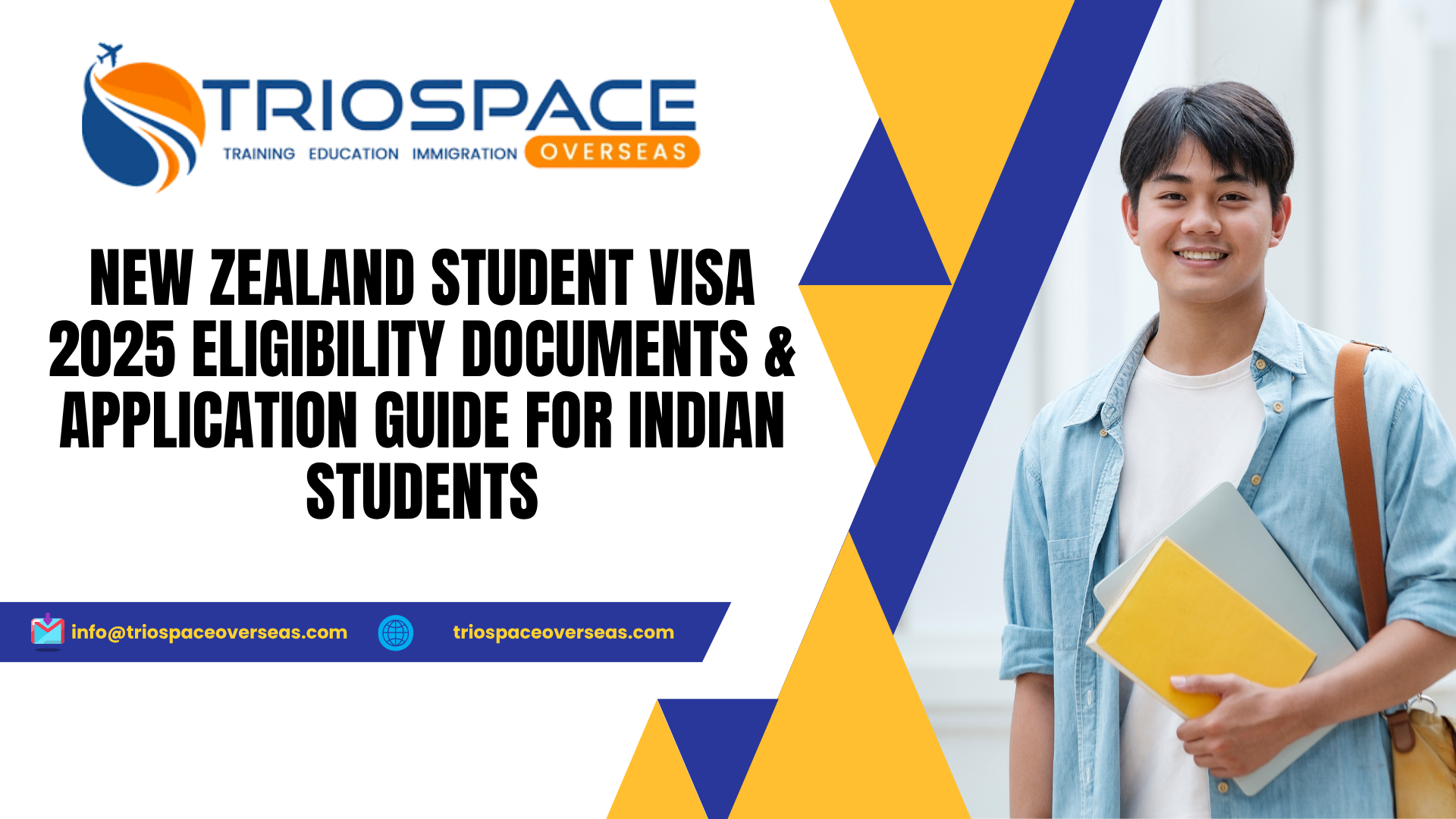This is the primary intake for most programs and courses.

Australia Education Consultants in Hyderabad
Welcome to Triospace Overseas, your top choice for Australia education consultants in Hyderabad. We specialize in guiding students through their journey to study abroad, focusing on helping you achieve your dreams of studying in Australia. As dedicated Australia education consultants , we provide personalized support and guidance, ensuring a seamless process from start to finish. Whether you’re searching for the best consultancy for Australia in Hyderabad, Triospace Overseas is here to assist you.
At Triospace Overseas, we pride ourselves on our comprehensive range of services designed to make your study abroad experience as smooth and stress-free as possible. From helping you select the right university and course to assisting with your application and visa process, our team of experts is committed to your success. We also offer pre-departure briefings and post-arrival support to ensure you are well-prepared for your new adventure. Choose Triospace Overseas, the top Australia education consultants in Hyderabad, and let us help you achieve your academic goals.
Get Personalized Counselling Today!
Leave your details with us, and our team member will connect with you shortly.
Why Study in Australia?
Australia has become a top choice for international students due to its high-quality education, vibrant culture, and stunning landscapes. Here’s why studying in Australia is a great decision:
Australian universities are globally recognized for their academic excellence and innovative research. Institutions like the University of Melbourne, Australian National University and the University of Sydney are consistently ranked among the world's best.
Australia is a multicultural society, welcoming students from all over the world. This diversity enriches the student experience, providing a vibrant, inclusive environment where everyone feels at home.
Australia offers generous post-study work visas, allowing graduates to gain valuable work experience in their field. This can also be a pathway to permanent residency, making Australia an attractive destination for long-term career prospects.
Compared to other popular study destinations, Australia offers a relatively affordable cost of living. With a range of accommodation and lifestyle options, students can find something that fits their budget while enjoying a high quality of life.
Australian cities are regularly ranked among the most livable in the world. They offer a safe, healthy, and high standard of living, with excellent healthcare, infrastructure, and recreational facilities.
From the Great Barrier Reef to Uluru, Australia’s natural beauty is unparalleled. Students have ample opportunities to explore and enjoy outdoor adventures, adding an exciting dimension to their educational experience.
Top Courses to Study in Australia
As the best consultancy for Australia in Hyderabad, we guide students toward programs aligned with global career trends and opportunities. Popular courses include:
Engineering and Technology
Business and Management
Medical and Healthcare
Other High-Demand Programs
Top Universities in Australia
Australia is home to many prestigious universities known for their academic rigor and research opportunities. Here are some of the top universities:

Known for its strong research output and diverse academic programs.

Renowned for its research excellence and comprehensive range of courses.

Offers a wide variety of programs and is known for its beautiful campus.

Recognized for its research contributions and innovative teaching methods.

Offers diverse programs and has a strong global presence.
Intakes to Study in Australia (2025)
Australian universities typically have two main intakes:
Another major intake that offers numerous courses and is ideal for students who may have missed the first intake.
Planning your application timeline with Triospace Overseas, the top consultancy in Hyderabad for Australia, ensures you meet all deadlines and submit a strong application.

Cost of Studying in Australia
Understanding the cost of studying in Australia is crucial for financial planning. Here’s a breakdown of the main expenses:
Scholarship Opportunities
To support international students, Australia offers a variety of scholarships:
- Government Scholarships: Programs like the Australia Awards and Endeavour Scholarships provide substantial financial support, covering tuition fees, travel expenses, and living costs.
- University Scholarships: Many universities offer merit-based and need-based scholarships to international students, making education more affordable.
- Private Scholarships: Various organizations and foundations also offer scholarships for different courses and disciplines, adding extra financial aid options.
Triospace Overseas, the study in Australia consultants in Hyderabad, can help you identify and apply for these scholarships, ensuring you have the best chance of receiving financial aid. With our assistance, you can focus on your studies and enjoy a fulfilling educational experience in Australia. Let Triospace Overseas be your partner in securing the scholarships that will help you succeed academically and professionally.
Types of Visas
To study in Australia, you will need a student visa. The main types of student visas are:

Subclass 500 (Student Visa)
Required for full-time courses that last more than three months. This visa allows you to study and work part-time during your course, giving you the opportunity to gain valuable work experience while studying.

Visitor Visa
Suitable for short-term courses that are less than three months. This visa is ideal for students looking to take a short course or a certification program.
Triospace Overseas, the Australia education consultants in Hyderabad, provides comprehensive support throughout the visa application process, ensuring you meet all requirements and deadlines. Our team of experts will guide you through each step, making the process smooth and stress-free.
Eligibility Criteria for Students
To be eligible to study in Australia, you must meet certain criteria:
- Academic Requirements: Completed previous education with good academic records. Each program and university may have specific academic requirements.
- English Language Proficiency: Proof through tests like IELTS, TOEFL, or PTE. Some programs may have minimum score requirements.
- Acceptance Letter: From a recognized Australian institution. This confirms your admission and is necessary for your visa application.
- Financial Proof: Evidence of sufficient funds to cover your tuition fees and living expenses. This can include bank statements or scholarship letters.
- Valid Passport: Essential for the visa application process. Ensure your passport has sufficient validity for the duration of your stay.
- Health Insurance: Mandatory for international students. You may need to purchase this insurance as part of your visa requirements.
Top Cities for Study in Australia
Australia offers a variety of cities that are ideal for international students. Each city has its own unique charm and opportunities. Here are some of the top cities to consider:

Known for its vibrant city life, iconic landmarks like the Sydney Opera House, and top universities such as the University of Sydney and UNSW. Sydney offers a dynamic blend of cultural experiences and excellent public transport.

Renowned for its cultural diversity, Melbourne is home to prestigious institutions like the University of Melbourne and Monash University. The city is famous for its arts scene, coffee culture, and numerous festivals.

This sunny city is home to the University of Queensland and Griffith University. Brisbane offers a relaxed lifestyle, beautiful weather, and a growing international student community.

Known for its high quality of life and institutions like the University of Western Australia, Perth combines urban sophistication with natural beauty. The city’s vibrant economy and beautiful coastline offer plenty of opportunities.

Offers a balance of urban and natural beauty, with top universities such as the University of Adelaide and Flinders University. Adelaide is known for its affordable cost of living and friendly community.
Each of these cities offers unique opportunities and experiences for international students. With Triospace Overseas, the leading Australia education consultancy in Hyderabad, you can get personalized guidance to choose the city that best fits your academic and lifestyle preferences.
Cost of Living in Australia
The cost of living in Australia varies by city. Here’s an overview:
Accommodation
AUD 600 – AUD 1,500 per month
Food
AUD 300 – AUD 500 per month
Transportation
AUD 100 – AUD 200 monthly
Personal Expenses
AUD 200 – AUD 400 monthly
Health Insurance
AUD 600 – AUD 800 per year
Planning your budget is essential for a smooth stay in Australia. It’s important to consider all potential expenses, from daily living costs to unexpected needs. Additionally, cities like Sydney and Melbourne may have higher living costs compared to places like Adelaide or Brisbane.
Understanding and managing these costs effectively will help ensure a comfortable and stress-free experience while studying. Consulting with experts who provide detailed cost estimates can be incredibly helpful in this process, ensuring that you can budget effectively and make the most of your time in Australia. Let professionals guide you through the financial aspects to make your study abroad journey smooth and well-planned.
FAQ's - Studying in Australia
Absolutely! Triospace Overseas is widely recognized as one of the top education consultancies for studying in Australia. With years of experience in the overseas education services industry, they offer expert guidance and personalized support, making them a trusted choice for students aiming to achieve their academic goals in Australia.
Tuition fees for undergraduate programs range from AUD 20,000 to AUD 45,000 per year, while postgraduate programs range from AUD 22,000 to AUD 50,000 per year. Additional costs include accommodation, food, and personal expenses.
Most universities need proof of English proficiency, like IELTS, TOEFL, or PTE scores. The minimum required scores depend on the specific course you’re applying for, ensuring that students can succeed in their studies.
Yes, international students on a Subclass 500 visa can work up to 20 hours per week during the academic term and full-time during scheduled breaks.
Scholarships in Australia come from the government, universities, and private organizations. They cater to merit-based, need-based, and specific fields of study, ensuring various opportunities for financial aid tailored to different student needs and academic goals.
Triospace Overseas stands out due to its extensive experience, dedicated team, and personalized approach. Our consultants have a deep understanding of Australian universities and educational systems, ensuring you receive tailored advice that aligns with your academic goals. With a proven track record of successful student placements, Triospace Overseas is committed to helping you achieve your dream of studying in Australia.
Triospace Overseas helps you identify suitable scholarships, prepare strong applications, and maximize your chances of receiving financial aid through expert guidance and support.
Choosing Triospace Overseas as your Australia education consultants in Hyderabad ensures that you receive personalized guidance, extensive experience, and comprehensive support throughout the entire process. From applications to visas and scholarships, Triospace Overseas is dedicated to making your study journey in Australia smooth and successful. Our expertise and commitment to student success set us apart as the top choice for Australia education consultants in Hyderabad.
Triospace Overseas assists students in selecting the ideal university and program, providing personalized guidance and insights based on their academic goals, preferences, and career ambitions, ensuring a successful and tailored study experience.

















